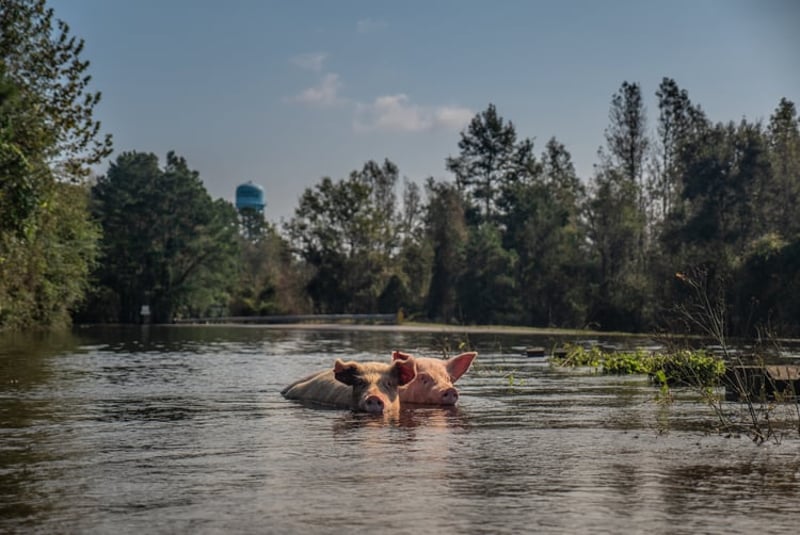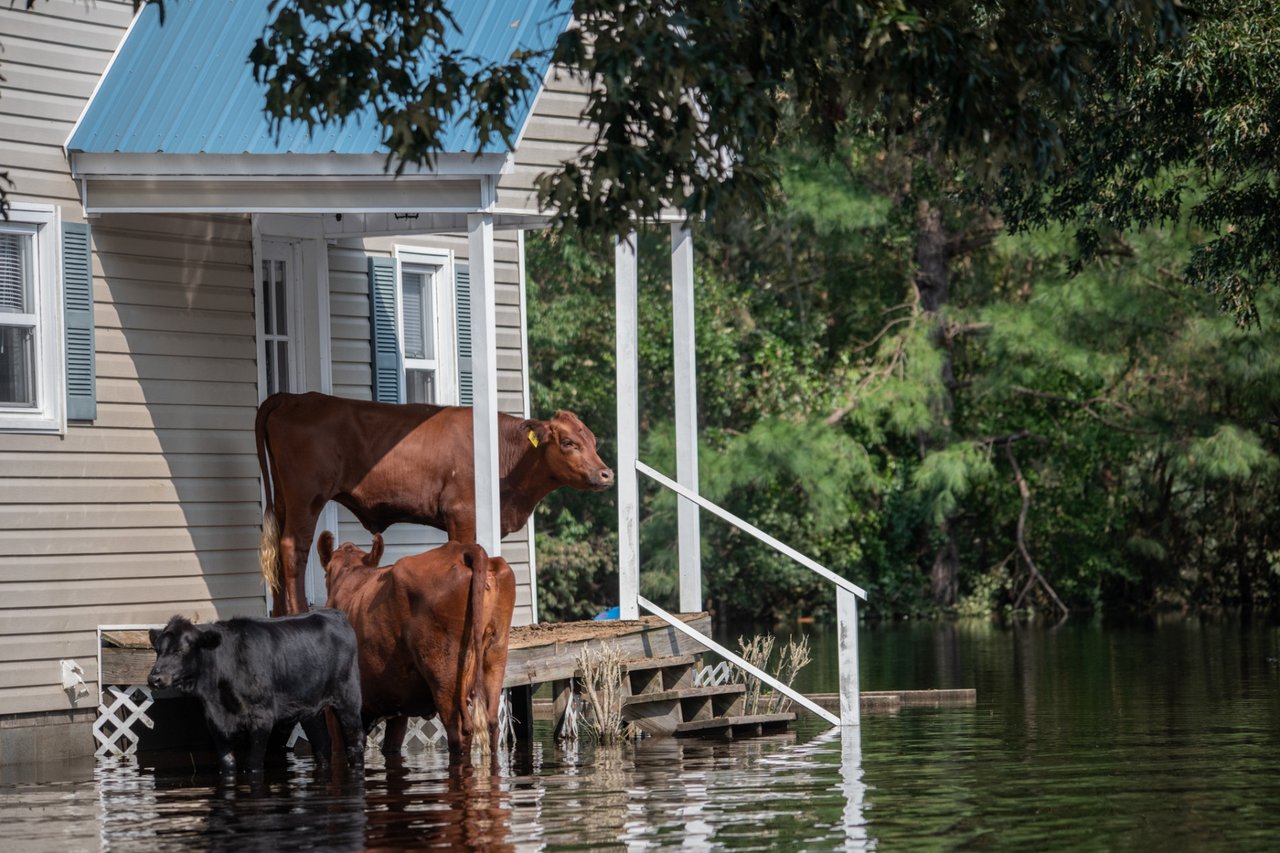
A new study commissioned by World Animal Protection provides a more accurate picture of the devastation wrought by Hurricane Florence in 2018 on animals and farmers in North Carolina and documents an industry unwilling to build back better.
New research—produced by Dr. Elisabeth Stoddard of Worcester Polytechnic Institute and Stephanie Eccles of Concordia University and published by World Animal Protection this month—shows that the impacts to North Carolina’s intensive farming region from Hurricane Florence in 2018 may have been significantly downplayed by local government and industry.
Interviewees, which included representatives from government, NGOs, and the farming community, consistently found evidence that animal mortality numbers reported by the state and industry were inaccurate and underreported, especially regarding the numbers of animals who died in the days following the storm as well as the number of animals who were buried.
A common cause of death for farmed animals was likely suffocation when outages shut down ventilation systems. Some pigs and other farmed animals who escaped died from the exposure of being in novel environments.
Large meat companies were all too willing to leave animals behind. As legal owners of the millions of chickens and thousands of pigs in the region, the companies benefit from the losses while taking on little of the risk. They write the farm management practices that guide how contract farmers--who have the animals in their care and depend on their survival for their livelihoods--can make decisions to protect animals and keep them safe when disasters strike.
The report describes how contract farmers, who want to do the best for the animals in their care, were often constrained by their contracts with large meat companies. Farmers were encouraged to protect equipment from damage, including feeders and barn curtains, by raising them, meaning that access to food and protective barriers for the animals was removed during the storm itself. It was expected that animals would contract illnesses from exposure, resulting in increased mortality after the disaster, yet post-storm mortality numbers were not provided.
Disaster planning efforts and resources that currently exist are focused heavily on managing mortality after an event, with little attention paid by industry or government on keeping the animals alive or protecting them in future storms.
Some citizens were also actively inhibited from rescuing surviving animals, the report notes.
A group of would-be rescuers attempted to save 10 pigs stranded on a strip of elevated highway, only to be told by local authorities to return the pigs to where they were found because they were still the legal property of the owner. More than a week later, the group was told the pigs were still there, and they heard at least one had been killed when struck by a vehicle.
Pig production is the most contentious industry in North Carolina, but during Hurricane Florence, the poultry industry largely evaded scrutiny.
A legal specialist interviewed noted that they are not aware of any company that has decided to construct facilities differently following a significant storm or to build back better. Oftentimes this is due to insurance limitations. Contract producers also struggle to improve resilience due to financial constraints as integrators pay very little per animal and have not increased prices paid to farmers much in the past few decades.
In contrast, the report highlights the story of a pasture-based pig farmer who prepared for the hurricane by protecting the animals in mind, providing surplus straw to absorb floodwaters and provide warmth to the animals, ensuring huts positioned against the direction of wind and rain, etc., impossible measures for a large factory farm to take. The farmer lost materials and equipment, but the animals made it through.
Large meat companies were all too willing to leave animals behind. As legal owners of the millions of chickens and thousands of pigs in the region, the companies benefit from the losses while taking on little of the risk.
